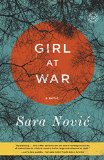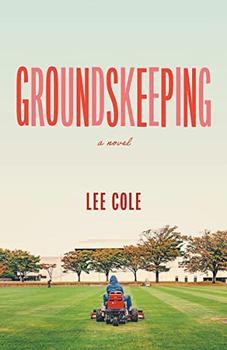Summary | Excerpt | Reviews | Beyond the book | Read-Alikes | Genres & Themes | Author Bio

When we first meet Ana Juric, she is a carefree ten-year-old tomboy, playing soccer and traveling with her parents and baby sister Rahela from their home in the capital city of Zagreb, Croatia, to her godparents' house in a coastal village. It is on one of these vacations that Ana first becomes aware of what is happening in her country. She goes on an errand for her godfather, Petar, and the shopkeeper, goading, asks her if she wants to buy Serbian or Croatian cigarettes. This serves as a perfect metaphor for how people will soon be classified too.
Ana's best friend Luka is Bosnian, a third ethnicity and religious group, but between all these there is only minor linguistic variation. Despite dialects, people can understand each other. All the more ironic, then, that war will soon divide them. Through Ana's first-person narration, we see the state of affairs getting desperate. Serbian President Milosevic is on television talking about ethnic cleansing; ID checks and air raids are commonplace; refugees are flooding in. Childish one-upmanship takes on a macabre cast as Ana's friends compare stories of murders observed.
As if war is not stressful enough, Ana's parents must also contend with Rahela's illness. At an English-speaking clinic across the border in Slovenia, a doctor tells them that Rahela has acute kidney problems and needs to be transported to Children's Hospital in Philadelphia, but because her parents' visas don't come in time, she has to go alone. On the way back from dropping her off in Sarajevo, Ana and her parents are stopped by soldiers. It's a tense, life-or-death situation, and it soon becomes clear that things will never be the same for Ana.
The careful structure of Girl at War keeps it from becoming just another ordinary, chronological war story. The intense climax point when Ana's family is stopped by the soldiers is the end of Part I of the novel, and Part II shoots forward a decade to show Ana's new life in America. She studies literature in Manhattan and goes home on breaks to her and Rahela's adoptive family in Trenton. On this day, though, Ana has an important mission. Sharon Stanfeld, part of the peacekeeping team that rescued her from Croatia, has asked her to recount her war experiences for a UN human rights committee.
Ana has concealed her origins from everyone in New York, including her boyfriend, who thinks she was born in New Jersey. It thus comes as a surprise – to readers, too – that Ana was a child soldier fighting against the Serbs (see Beyond the Book.) Sara Novic's economical yet evocative prose captures Ana's ambivalent feelings about Croatia. She knows that, even in the wake of 9/11, Americans will never understand what it is to have war on the doorstep; "they hadn't smelled the air raid smoke or the scent of singed flesh on their own balconies; they couldn't fathom that such a dangerous place could still harbor all the feelings of home."
Troubled by insomnia and nightmares, Ana decides to book a trip back to Zagreb to face her past. She stays with Luka's family and drives out with him in search of the spot where her life changed. Part III thus starts with another perfect turn: a flashback to ten years ago, when Ana was recruited as a child soldier. Taking Polaroid pictures along the way, Ana rediscovers what she loved about her country; for the first time, her nostalgia is not tinged with sadness.
Novic's recreation of a child's perspective on the horrors of war is pitch-perfect. Ana's viewpoint is realistic and matter-of-fact, without the melodrama an omniscient narrator might inject. In fact, I can barely think of a negative thing to say about this novel. It is concise and well-structured, and it strikes a perfect balance between past and present, tragic and hopeful. War novels can often be magnificent, but at the same time so bleak that it is a struggle to keep reading. That is not the case with Girl at War. Through what Ana remembers but also what she leaves out – what is too painful to write about directly – Novic shows that the effects of war never go away, but people can learn to live with them nonetheless.
![]() This review was originally published in The BookBrowse Review in June 2015, and has been updated for the
April 2016 edition.
Click here to go to this issue.
This review was originally published in The BookBrowse Review in June 2015, and has been updated for the
April 2016 edition.
Click here to go to this issue.

If you liked Girl at War, try these:

by Leo Vardiashvili
Published 2025
Amid rubble and rebuilding in a former Soviet land, one family must rescue one another and put the past to rest: a stirring novel about what happens after the fighting is over

by Lee Cole
Published 2023
An indelible love story about two very different people navigating the entanglements of class and identity and coming of age in an America coming apart at the seams - this is "an extraordinary debut about the ties that bind families together and tear them apart across generations" (Ann Patchett, best-selling author of The Dutch House).
Your guide toexceptional books
BookBrowse seeks out and recommends the best in contemporary fiction and nonfiction—books that not only engage and entertain but also deepen our understanding of ourselves and the world around us.